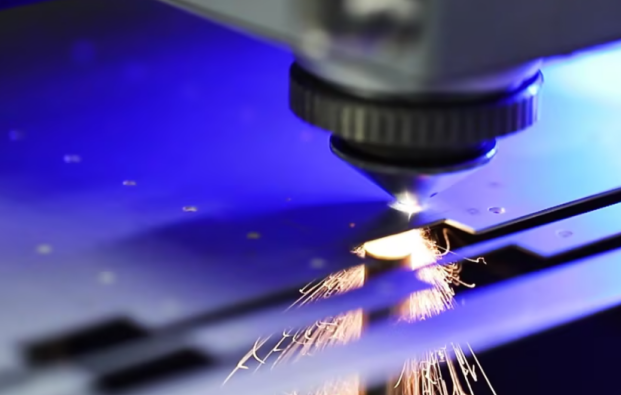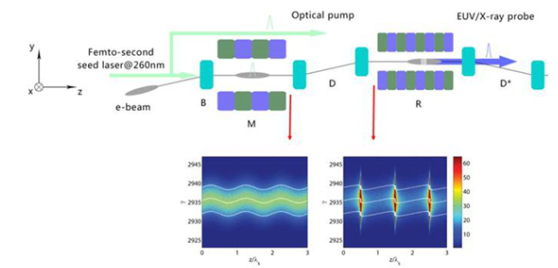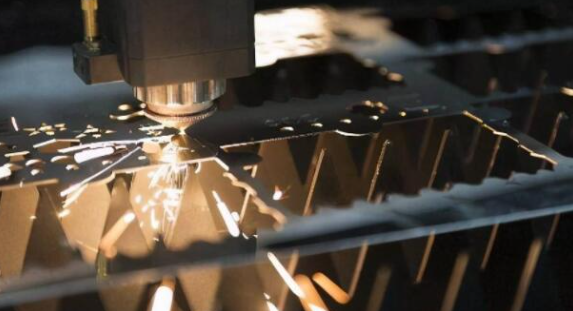In modern industrial workshops, a thin yet surprisingly powerful laser beam can precisely cut metals and quickly carve plates—this is the "magic" of fiber laser cutting technology. As a star technology in the field of laser ...
Contact Us
In modern industrial workshops, a thin yet surprisingly powerful laser beam can precisely cut metals and quickly carve plates—this is the "magic" of fiber laser cutting technology. As a star technology in the field of laser processing, it has quietly transformed the production methods of many industries such as shipbuilding, construction machinery, and electronic equipment, relying on its advantages of high efficiency, precision, and low cost, and has become a "capable assistant" in the field of precision processing.
I. What is Fiber Laser Cutting?
Fiber laser cutting is a non-contact cutting technology centered on fiber lasers. Simply put, it focuses a high-energy laser beam onto the material surface through an optical fiber, allowing the laser’s light energy to be instantly converted into thermal energy. The irradiated area of the material quickly reaches its melting point or even boiling point, entering a molten or vaporized state. Then, auxiliary gas blows away the residues, and with the relative movement between the laser and the workpiece, the desired shape can be precisely "cut out".
This system is like a sophisticated "light-controlled craftsman", consisting of an industrial computer, controller, workbench, light-guiding system, and other components. After the computer issues instructions, the servo system controls the precise movement of the workbench, the laser emits pulses at a set frequency, and the light-guiding system optimizes the laser beam and weakens reflected light to avoid equipment damage, ensuring a stable and efficient cutting process.
II. The "Outstanding Advantages" of Fiber Laser Cutting

Compared with traditional cutting technologies and CO₂ laser cutting, fiber laser cutting has many prominent advantages, making it a "efficiency leader" and "cost-saver" in industrial processing.
In terms of efficiency, its performance is impressive. When cutting thin plates, its speed can be 2-3 times that of a CO₂ laser cutting machine with the same power; when cutting materials with a thickness of 6mm, the speed of a 1.5kW fiber laser cutting machine is comparable to that of a 3kW CO₂ laser cutting machine, greatly saving production time 4.
In terms of cost, its advantages are even more significant. Its photoelectric conversion efficiency is as high as 30%, much higher than that of traditional cutting equipment, which can effectively reduce energy consumption. At the same time, the equipment uses optical fiber transmission, with a simple optical path that requires no complex maintenance. The average time between failures exceeds 100,000 hours, and there are basically no consumables, significantly reducing long-term operation and maintenance costs 5.
Its technical flexibility also makes it stand out. The wavelength of fiber laser is only 1064nm, which is more easily absorbed by metal materials—even highly reflective materials such as aluminum and copper can be easily cut. It can also process arbitrary patterns and even perform multi-dimensional spatial cutting on special-shaped materials such as steel pipes, making it widely used in the field of 3D laser cutting in the automotive industry 6.
In addition, its cutting precision is extremely high, with a minimum kerf width of only 15μm and a cutting accuracy of 8μm/30mm. The heat-affected zone is small, and material deformation is slight, which can maximize material utilization and product quality 7.
III. The "Applicable Boundaries" of Fiber Laser Cutting
Although fiber laser cutting has obvious advantages, it is not a "one-size-fits-all" solution. Experiments have shown that when cutting thick steel plates above 15mm, the cutting quality will be affected because the molten metal is difficult to discharge completely; when cutting low-carbon steel, if the speed exceeds 6m/min, the quality will also decrease significantly 1.
However, it is a "top player" in the processing of thin to medium-thickness materials. The surface roughness of stainless steel cutting below 4mm is similar to that of CO₂ laser cutting, and within the thickness range of 6-10mm, the surface roughness can basically remain stable 2. Currently, it has been widely used in the precision metal cutting of electronics, machinery, medical, and other industries, occupying 70% of the material processing market 3.
From plate cutting in shipbuilding, to component processing in construction machinery, and then to the forming of precision components in electronic equipment, fiber laser cutting uses the power of a "beam of light" to promote the development of industrial production towards higher efficiency, higher precision, and greener practices. With continuous technological upgrades, it will unlock more possibilities in the field of precision machinery processing in the future, allowing the "light-cutting magic" to create greater industrial value.

Having understood the application principles and advantages of fiber laser cutting, next week we will specifically explore fiber laser cutting, its applications in precision machining, as well as its future prospects.